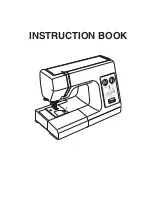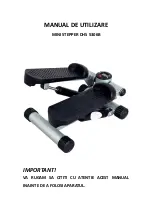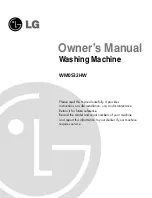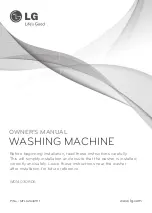
UTILITY STITCHES
———————————————————————————————————————————————————————
44
Quilting
Sandwiching batting between the top and bottom
layers of fabric is called “quilting”. Quilts can easily
be sewn using the optional walking foot and the
optional quilting guide.
Note
●
Only use the walking foot with straight or
zigzag stitches. Do not use other patterns.
Reverse stitches cannot be sewn with the
walking foot.
a
Baste the fabric to be quilted.
b
Remove the presser foot and the presser foot
holder.
• For details, refer to “Removing the presser
foot holder” (page 25).
c
Hook the connecting fork of the walking foot
onto the needle clamp screw, lower the
presser foot lever, and then use the presser
foot holder screw to attach the walking foot
to the presser bar.
a
Connecting fork
b
Needle clamp screw
c
Presser foot holder screw
d
Select stitch
,
or
.
e
Place one hand on each side of the presser
foot, and then evenly guide the fabric while
sewing.
Note
●
When sewing with the walking foot, sew at
a speed between slow and medium.
■
Using the optional quilting guide
Use the quilting guide to sew parallel stitches that
are equally spaced.
a
Insert the stem of the quilter into the hole at
the rear of the walking foot or presser foot
holder.
Walking foot
Presser foot holder
b
Adjust the stem of the quilter so that the quilt
guide aligns with the seam that has already
been sewn.
●
Use the screwdriver to tighten the screw
securely. If the screw is loose, the needle may
strike the presser foot and cause injury.
●
Be sure to turn the handwheel toward the
front of the machine to check that the needle
does not strike the presser foot. If the needle
strikes the presser foot, injury may result.
CAUTION
NCBC2000.book Page 44 Thursday, October 21, 2004 4:32 PM
















































